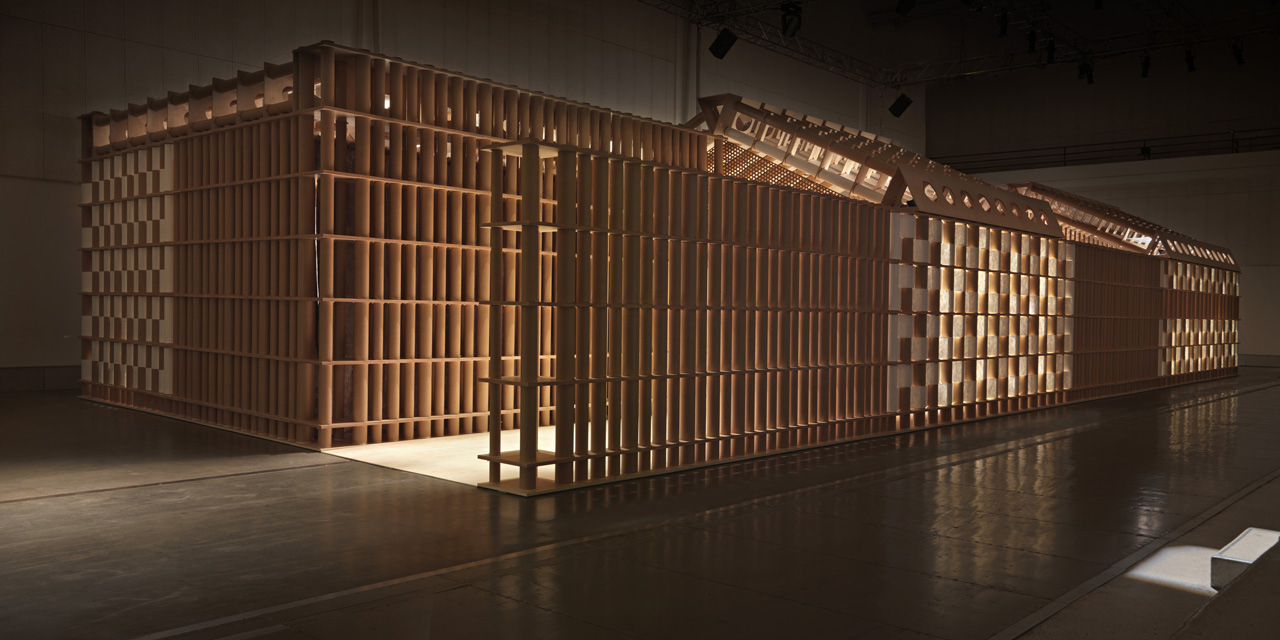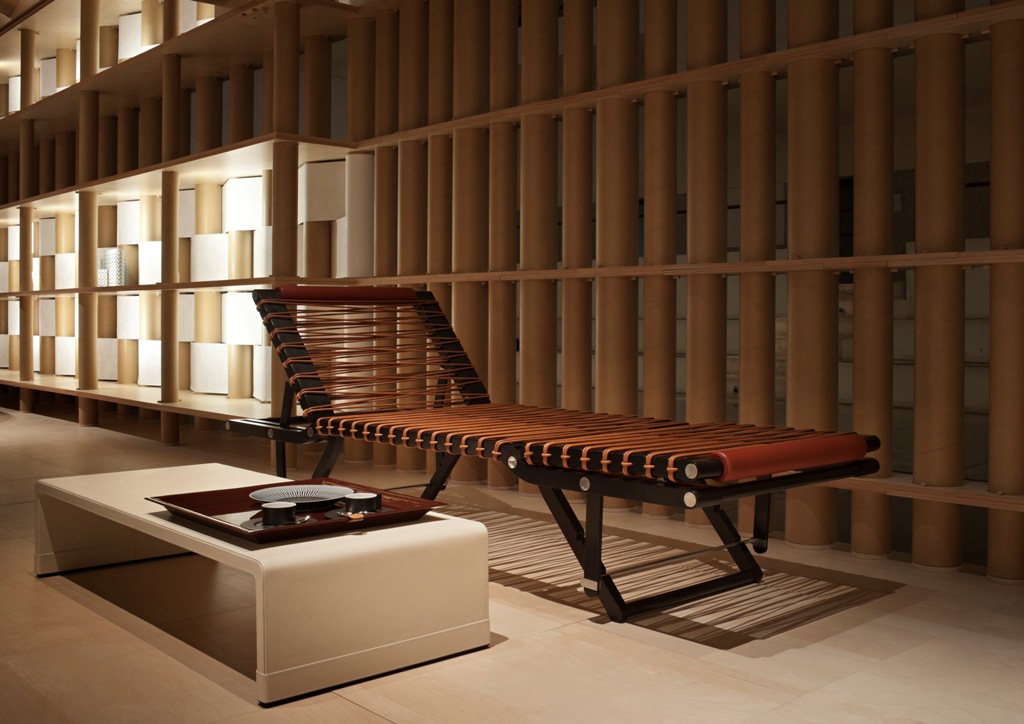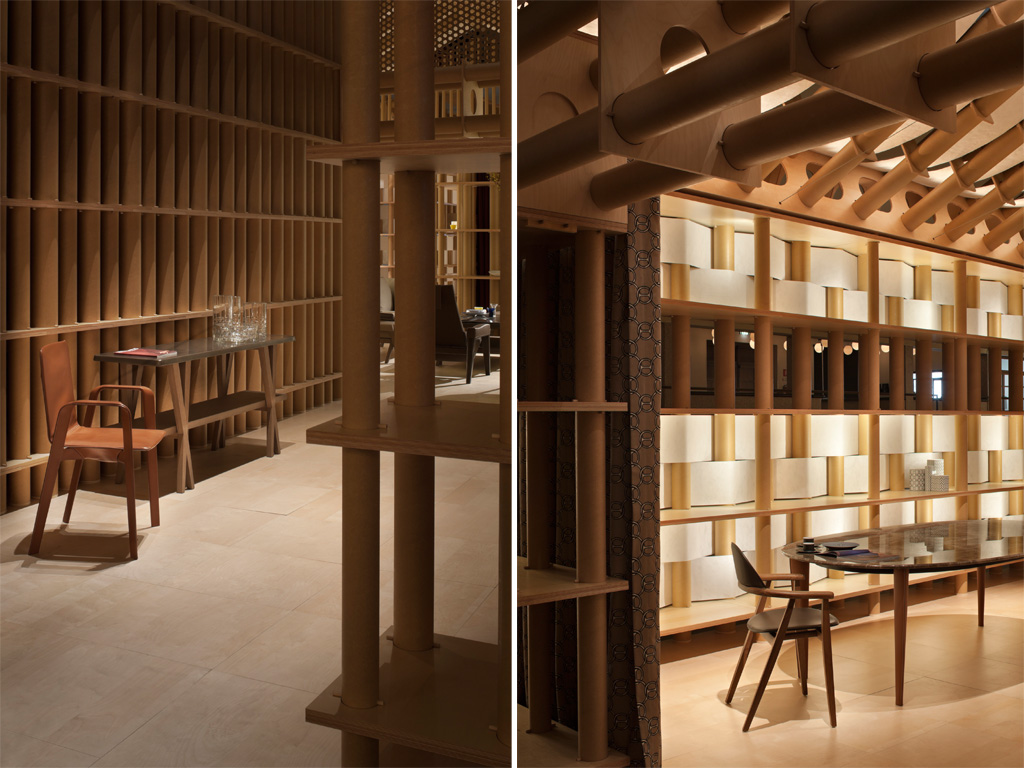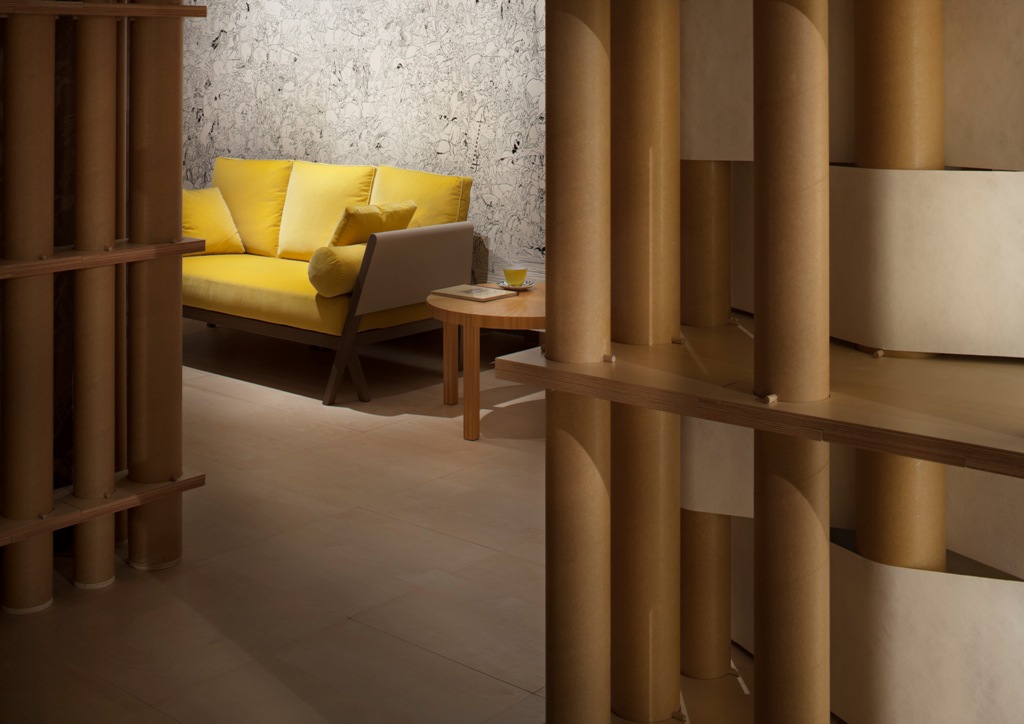Hermès has thrown open its doors and invited the designers Enzo Mari, Antonio Citterio and the RDAI studio (Rena Dumas Architecture Intérieure) to chart a new page in its history in the domain of furniture. “These collections are an opportunity to demonstrate a contemporary expression of Hermès, faithful to its craftsman spirit and imbued with values of functionality and comfort” says Pierre-Alexis Dumas, artistic director of Hermès. Among these creations are collections of carpets, furnishing fabrics and wallpapers. Today Hermès puts its signature to a complete world for the home.
Enzo Mari works by elimination: his method consists of highlighting the essence of a project, to arrive at timeless objects. A manifesto shared with Hermès, where elegance comes without affectation. The designer worked with Hermès craftsmen and its R&D workshop: “This long process enabled me to understand in depth the work that goes into materials such as the Hermès leathers.”
Retaining only the object’s core functionality, Enzo Mari has reduced the desk to a pure form – a table in three pieces lightly surrounding the body – covered in smooth bull calf selected for its soft finish. A sensuality close to that of the wood used for the chair, a Canaletto walnut polished to a silken finish, particularly on the arms. “The most noble wood that exists, with its flamed vein and warm brown colouring” adds the Italian designer. To accompany the desk, Enzo Mari created a small storage coffer. It is a freeform oval in shape, like a pebble one finds on a beach. Geometric marquetry draws the eye to the wood grain. The top pivots gently around the axis formed by one of the legs to reveal almost hidden internal shelves, covered in leather. Added to this, two tables – one oval, one round – with legs covered in smooth bull calf stitched like the handle of a bag. Marble, veined with beige, rose, or marron glacé, bordering on amber, matched with gold, étoupe, H red, ebony or black legs.
Without a single superfluous detail, the beauty of the Métiers collection lies in the attention devoted to the materials and in the uncompromising way in which they are handled. If there is sophistication, it is in the stitchwork, or in the perfection of a finish. Restrained objects, whose quality is immediately apparent. This artisanal spirit has moved the author of Fatti a mano. Just like the generations who have built the house of Hermès, Enzo Mari* shares a respect for work crafted by hand.
These pieces of contemporary furniture continue along the lines of Jean-Michel Frank’s “elemental sobriety” and of the furniture he created in the 1920s and 30s, some in collaboration with Hermès workshops. In 2010, the house reissued the Confortable sofa and armchair, inverted U low tables, X tables and exceptional pieces in straw marquetry like the folding screen and the cupboard of secrets.
Hermès contributed its savoir-faire as leather craftsmen to selecting the leathers, adapting the “piqué-sellier” stitch to furniture and in devising an unbroken ribbon of piping. Jean-Michel Frank created a style of uncluttered elegance that the Parisian “Café Society”, which included Charles and Marie-Laure de Noailles, Nelson Rockefeller, Elsa Schiaparelli and Cole Porter, adopted as their own.
Antonio Citterio was fascinated by the tradition of French decorators embodied by Jean-Michel Frank. During his visit to the Conservatoire des Créations Hermès, he saw how the attention devoted to savoir-faire and the quality of materials could be synonymous with tradition, inventiveness and functionality. With the Matières collection, he aims to rediscover the distinctive features of everyday furniture found in the living room, reading room or “fumoir”, and to reexamine the ancient variety of types of chair: wing chairs, reading chairs, love seats, “méridiennes”, “vis-à-vis”, companion chairs… And so he created his reading chair and chaise longue. Alert to combinations of colours and materials, Antonio Citterio pairs finished Inox with greyed oak, Clémence bullskin with fabrics, both rough and sophisticated.
With the knowledge of upholsterers, leatherworkers, “dinandiers” (metalworkers) foremost in his mind, Antonio Citterio carefully worked the line where wood meets leather, the joins of leather and metal, and the juxtapositions of leather and fabric. It is the excellence and uncompromising quality of the savoir-faire that make the purity and beauty of the materials apparent. Everything, according to him, lies in the emotions that they trigger: “First we want to sit, then to touch and to make the object live”. During his visit, a saddle horse also caught his eye. A suggestion of its strange roportions and voluminous leather can be found in the design of the armrests of the seats in the Matières collection.
Antonio Citterio is fond of creating narratives that are imbued with the house’s spirit. By shaping the sofa and tables legs in the form of an X, he evokes the nomadic origins of Egyptian or Greek folding stools, and above all recalls to our minds the Pippa collection of folding furniture designed by Rena Dumas and Peter Coles in 1987.
Hermès entrusted the creation of the Sellier Chair, this collection’s signature piece, to RDAI, the interior architect and design studio founded by Rena Dumas in 1972. Its simple design is available in different versions: with or without armrests, completely covered in leather, or in leather and toile H – a robust fabric used in the creation of suitcases. It is also the embodiment of the saddlemaker’s skills: covering, polishing, and zips on removable covers. Denis Montel, artistic director of RDAI, and the designer Éric Benqué examined the width of the seat, the angle of the backrest, and the relationship of leather to the body, while also concentrating on the transversal function of a seat destined for the office, bedroom or dining room.
This ability to work a material in the most rigorous fashion, to the point where new techniques for its use are conceived, is one of the guiding threads that unites the various Hermès crafts, from fabrics to furniture, via the art of entertaining, decorative objects, carpets and wallpaper. Drawing on its narrative heritage, Hermès recalls its tradition as illustrator and colourist through a collection of furnishing fabrics and wallpapers. The Pêle-mêle wallpaper, designed by Philippe Dumas, reminds us of the house’s equestrian history while Beloved India evokes travel, the unknown and the remote, themes dear to Hermès. Both designs already exist either in silk scarves or in the decor of porcelain tableware. These are now available in fabric ranges that are suitable for furnishing.
The collection of fabrics revolves around three families: the Illustrative, the Graphic, and the Plains and semi-plains designs. The Illustrative designs, just like Finish, designed by Jean-Louis Clerc, originate from a silk scarf design, expressing a fantasy dear to Hermès. The Graphics such as So’H by Henri d’Origny or Up and down, recently designed by Sany Queudrus, play with the letter H. While Herringbone, the Hermès herringbone pattern, interpreted here in a contemporary version by Nigel Peake, plays with the contrast between the simplicity of the design and the sophistication of the ribbed silk. In the Plains and semi-plains family, the checked Échiquier unites sisal, cotton and horsehair, while the velvet Palomino is adorned with cashmere.
The development of these collections took time – a time spent researching the possibilities of surpassing the limitations of the material. They feature 150 products, including horsehair woven with sisal, and abaca (made from a species of banana tree found in the Philippines) in which the ultra-resistant natural fibre sets off the abstract designs of Cravache or Terre d’H. Hermès’ values are realised in and on the material itself. The most beautiful expression of this is the Beloved India jacquard, the appearance of which varies with the light.
The pattern of the spectacular lancé-découpé jacquard is created with a technique that uses a large number of weaves, adding richness to the colours and definition to the design. With the complexity of the design, printing techniques also differ. Thus Bibliothèque, conceived in the 1950s by Hugo Gryckar, who was inspired by Émile Hermès’ collection of equestrian works, is screen printed, like a silkscreen. The wallpaper version requires four screens while the fabric calls for twelve. These techniques affect the degree of clarity of the designs.
The American artists Janis Provisor and Brad Davis were invited to create a collection of carpets, whose patterns move between the narrative and the abstract: Appaloosa evokes the dappled coats of different horses, Patine the appearance of leather improving with age and Chevrons a daring reinterpretation of the house’s beloved pattern. Hermès is always on the lookout for the best savoir-faire, and discovered craftsmen in the Chinese region of Hangzhou using ancient techniques to create hand-knotted carpets of incredibly high density (100 knots/sq. inch minimum). These are produced with a rare silk from the region of Dandong, in Northern China, where cocoons grow on oaks rather than on mulberry trees, producing a silk that is exceptionally soft to the touch.
To exhibit these new collections, Pierre-Alexis Dumas turned to the architect of lightness, Shigeru Ban and his partner Jean de Gastines, to create an ephemeral home. A nomadic, modular structure – cardboard tubes woven with paper – the Pavillon Hermès was first installed in Milan at the International Furniture Fair. Within, the height of the ceiling and the size of rooms vary to simulate spaces that are sometimes more intimate, and sometimes more to be shared. This enables the viewer to picture themselves within the Hermès lifestyle.
The structure exudes the same spirit as that of the furniture and objects it houses, one which could be described, in the words of Jean Cocteau, as “the invisibility of true elegance”.





























